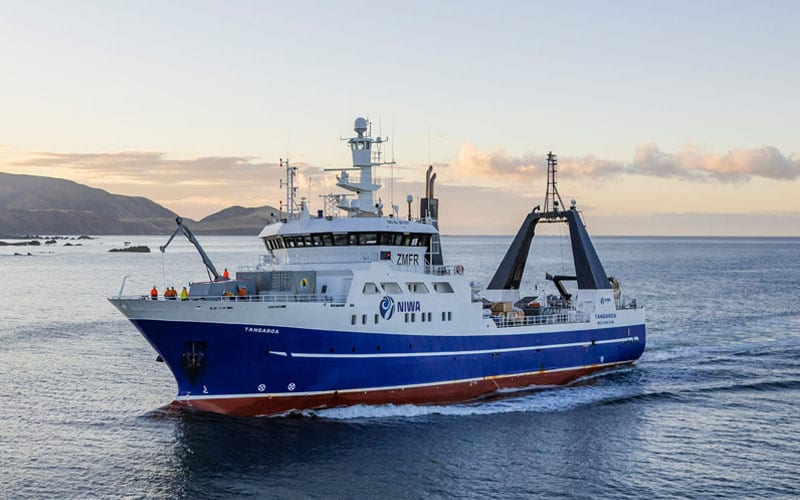Photo: Dave Allen R/V Tangaroa
Tangaroa ship campaign: Chatam rise
March 15th-April 6th 2020
The emissions studies that have taken place in the past using this set-up can suffer from bias due to the presence of local contaminants (both in the atmosphere and sea) and may not be generalized to the global oceans. Here, we propose to deploy two large air-sea enclosures directly at sea using the R/V Tangaroa (pictured above).
In order to perform these emission studies, New Zealand offers unique conditions since its Eastern coast is influenced by the subtropical convergence zone where sub-Antarctic Southern Ocean and subtropical Pacific waters meet. Subtropical waters are depleted in macronutrients but hold high concentrations of micronutrients. The bathymetric profile of the Chatham Rise locks the location of the convergence front and as a result facilitates sampling within contrasting conditions and small spatial ranges. In sub-Antarctic waters, wind and wave energy can evolve without hampering of land masses and therefore the potential role of the production of SSA is enormous. Although the time series stations (Figure 1) will be established in coastal proximity the bathymetric profile is steep and the influence of the high seas is still prevalent (Law et al., 2017).
Two Air-Sea Interaction tanks (ASIT), each with an immersed part of 1 m3 and an headspace of 1 m3 will be deployed and filled with open ocean waters of contracted biodiversities. The period chosen coincides with a natural phytoplanktonic bloom (March-April).
References:
Law, Cliff S.; Smith, Murray J.; Harvey, Mike J.; Bell, Thomas G.; Cravigan, Luke T.; Elliott, Fiona C. et al. (2017): Overview and preliminary results of the Surface Ocean Aerosol Production (SOAP) campaign. In: Atmos. Chem. Phys. 17 (22).

Figure 1. : New Zealand’s bathymetry and the overlying planned cruise track.


